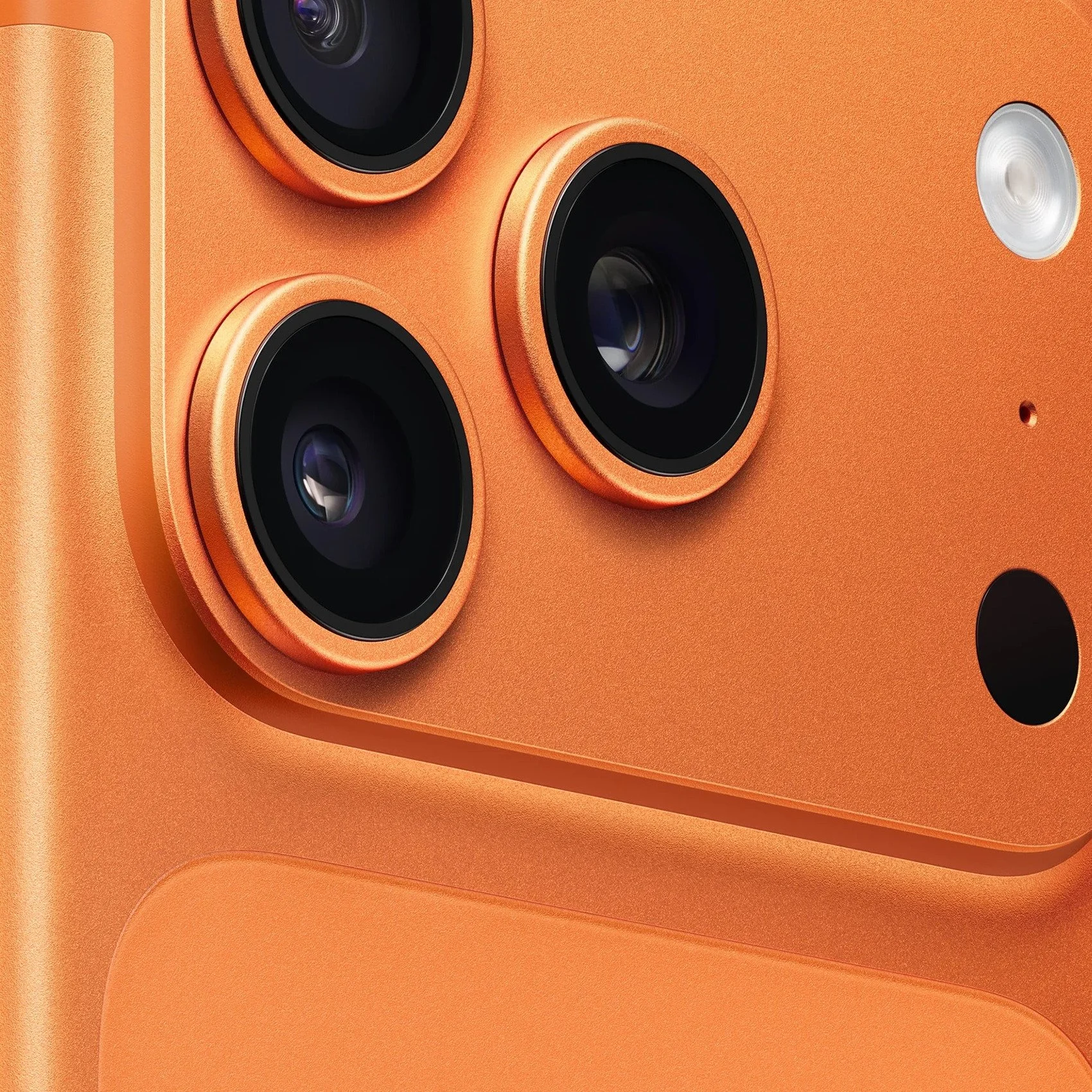25 Tips and Tricks for Taking Great Photos With Your Phone
If you recall a time before cell phones, getting a fantastic picture required a lot of effort. It's now simple to learn how to shoot beautiful images on your phone without the need for expensive cameras or desktop editing programs.
But make no mistake: Capturing a beautiful smartphone shot takes more than just pointing and firing. You've seen at least a handful of the many poor smartphone images available.
So what's the trick to getting quality smartphone photos? There are a number of them. For advice on how to get better smartphone photography, see the recommendations below.
1. Gridlines may help you balance your shot
Turning on the gridlines in the camera is one of the simplest and finest methods to enhance your smartphone images. This overlays a sequence of lines based on the "rule of thirds" on the screen of your smartphone's camera, a photographic composition theory that states a picture should be divided into thirds, both horizontally and vertically, for a total of nine parts.
This idea states that if you position objects of interest at these intersections or along the lines, your image will be more level and balanced,. Viewers can engage with it more organically.
iPhone: Tap "Settings," choose "Photos & Camera," then turn "Grid" on.
Samsung Galaxy: Open the camera app, choose "Settings," scroll down, and toggle "gridlines" to "on."
2. Set the focus on your camera
Today's phone cameras automatically focus the foreground of your frame, but not every photo you snap on your phone has a clear subject. Open your camera app and press the screen where you wish to sharpen the view to change where your camera lens will concentrate.
For instance, it may be challenging for your camera to track and adjust focus if you shoot a picture of something moving. Before taking the image, tap the screen to adjust the focus so that the moving object is as sharply in focus as possible. The camera's display should then show a square or circular symbol, which will cause the whole subject of the photo to become that icon's focus.
3. Employ HDR mode
A camera app function known as high dynamic range, or HDR, aids in balancing the bright and dark portions of a photograph with strong contrast. It may provide a more artistic or creative feel to photographs, but it is often used to create a picture that resembles what you see with your eyes.
Acquiring the ideal exposure for bright and dark regions may be challenging with smartphone cameras. You may photograph a person in low light in a room with a bright wall or low light outdoors against a bright backdrop. The subject of the shot could be underexposed if the exposure is set to the backdrop. On the other hand, adjusting the exposure to the subject can cause the backdrop to be overexposed.
HDR avoids this by preserving both the details in shadowy and bright parts and darker areas. The iPhone automatically captures HDR images. You may have to change the HDR settings on Android phones manually.
4. Utilize daylight
It's challenging to locate a fantastic smartphone flash snapshot. Most of the time, they cause an image to seem overexposed, ruining colors and making people in the picture look washed out.
Utilize all sources of natural light you may locate, even after dark. This allows you to experiment with shadows, like in the second picture below, or make a silhouette using other ambient light sources, including nearby buildings and traffic.
Use natural light while taking an excellent phone photo Image Source.
After taking the picture, experiment with your preferred photo editing program's "Exposure" function to see if you can make the picture slightly brighter without making it seem too grainy.
5. Speculate just on one thing
The finest photographs often focus on only one intriguing topic. Spend more time setting up the shot while shooting a photo of one. According to some experts in photography, the subject should only take up part of the frame, and two-thirds of the image should be negative space since this makes the topic stand out more.
To verify that the camera is focused and the lighting is optimal, touch your smartphone's screen to bring it to your subject.
Pro tip: After taking the picture, you may edit it with filters, Mobile Presets For Lightroom, and programs to make the topic even more colorful or crop it to frame it properly. You may modify the photo's brightness, contrast, and saturation from your phone as needed.
6. Keep the phone motionless
Despite the convenience of capturing pictures on the go provided by smartphones, these devices' cameras are nonetheless sensitive to movement. Stabilize your camera first to help prevent shaky or twisted shots.
To stop your hands or arms from swaying, lean against a person or a wall. You may also prop your phone up with books or other similar things to keep it stable.
7. Think about getting a portable tripod
There has never been an easy method to guarantee the photograph remains level and balanced when you shoot, particularly if you want to be in the image and not simply take a standard selfie with your outstretched arm. Mobile devices make it simple to capture any snapshot on the move.
With a mobile tripod, you can attach your smartphone for fast hands-free photographs without carrying any bulky equipment. Most portable tripods may be bent to any angle and are a little larger than your smartphone. Find out below how these little tripods might improve your mobile video experience.
8. Accept the emptiness
The regions surrounding and separating the subjects of a picture are simply referred to as "negative space," and it may transform a "good" photograph into a "great" one.
A photo's subject will stand out more and elicit a greater response from the viewer if it has a lot of empty space. And how does empty space appear? As in the illustration below, it's often a big area of open sky, a barren field, a tall wall, or water.
9. Look for other viewpoints
Using an unusual or unexpected perspective while taking pictures might help them stand out because it gives the subjects the appearance of depth or height. Since most smartphone images are either shot straight on or from a bird's eye perspective, it also helps the image stand out.
Try shooting a picture of the sky straight up and experimenting with it as negative space, as in the first image below. Alternatively, you may try taking it slightly lower.
Pro Tip: Use the SKRWT photo editing tool to make the lines seem straight and clean if you snap a picture and discover that the perspective is a bit off or skewed.
10. Use reflections for fun
Observing the sky as it appears in a body of water is really lovely. We are attracted to reflections, which is why we like viewing them. So keep an eye out for chances to experiment with them in pictures.
Puddles, bigger bodies of water, mirrors, eyeglasses, drinking glasses, and metallic surfaces are just a few unusual locations to discover reflections.
11. Employ leading lines
In certain images, a line directs the attention of the viewer to a particular area of the frame. They are referred to as leading lines. Think about stairs, building facades, railroad lines, highways, or even a route through the woods. They may be straight or curved.
Leading lines are excellent for adding depth to a picture and may make your shot seem to have been well planned, even if you just managed to stumble across a very amazing form by chance.
12. Observe symmetry
Pictures with symmetry may be very aesthetically attractive; it's also one of the easiest and most effective methods to create a shot. Symmetry is described as "a vague sense of harmonious and beautiful proportion and balance."
When it comes to photography, symmetry often refers to the ability to split a picture into two equal pieces that are mirror images of one another. That's a little different from reflections; symmetry may be created in a camera, as in the first image below, or it can be discovered "in the wild," as in the staircase image.
Remember to match up everything exactly by using the gridlines from tip #1.
13. Watch out for recurring trends
When strong visual elements like lines, geometric shapes, forms, and colors are repeatedly used, repetitive patterns—which are highly attractive to the eye—appear. Photographing something like a lovely, tiled floor may be enough to generate a great picture since these patterns can have a powerful visual effect. Occasionally, it's more entertaining to keep a watch out for places where they accidentally or organically arise, like with the congruent fire escapes on the left.
14. Try out different color combinations
Isn't it great when a picture is entirely black and white, except for one specific item? It turns out that there are applications for that, in fact. One of our favorite apps is Touch Color, which automatically transforms images to grayscale and allows you to fill in the areas you wish to colorize.
Color blocking may be used to draw attention to certain parts of a photograph that you want to stand out, such as a plant or another object with a striking color. In that it may make a single subject stand out, it accomplishes a similar aim to negative space, but, with color blocking, the photo's other components are kept intact for a unified picture.
15. Avert using zoom
It might be tempting to zoom in on a particular subject while taking a shot from a distance. However, zooming in might cause the image to seem grainy, hazy, or distorted, so it's really best to avoid it.
As an alternative, make an effort to go closer to your subject—unless it's a dangerous animal, in which case we recommend maintaining your distance—or shoot the picture from a preset distance and crop it afterwards. You won't have to sacrifice quality in this method, and a bigger picture is simpler to manipulate or optimize.
16. Observe minute details
You've probably heard the saying, "It's the little things," and sometimes it applies to pictures as well. Small, detailed, and delicate features may be captured in close-up photographs to create very captivating visual material. A gravel road, a tabletop made of tiles, or peeling paint are just a few examples of textures and patterns to look for.
Pro Tip: To (conservatively) improve the details in your shot, use the "sharpen" tool in your preferred photo-editing program.
17. Use flash only during the day if you must
Occasionally, although seldom at night, activating your camera's flash may enhance a picture. Any light might seem intrusive and uneven because dark images display a lot sharper contrast than your phone's flash does.
However, a flash might assist in lightening any dark shadows behind or under your primary subject in areas that are already well-lit.
Look for any dark shadows that you may wish to eliminate when framing your subsequent photo on the ground or up against vertical surfaces. Turn on the flash manually in your camera app if you see any. It's not a guarantee that your phone will see the shadows you wish to remove even if you set the camera flash to "auto." Just remember to turn off the flash after you are finished.
The next time you're taking product photos, think about how Flash might highlight or conceal certain lines and characteristics.
18. Manually adjust the exposure on your camera app
Your exposure is another aspect of a smartphone camera that you should manually adjust. When your phone's camera is active, tapping the screen automatically changes the amount of light the camera allows in in addition to refocusing the lens on a new subject. This won't always appear perfect, either. It is preferable to modify it manually.
Open your camera app and press the screen to manually adjust the exposure on your smartphone camera. You'll see a little sun symbol and a vertical scale when the lens refocuses. To change the brightness intensity, slowly slide your finger up and down this scale.
19. Publish abstracts
Photos that are abstract are intended to capture the spirit of a single item, or a group of related objects, without displaying the complete scene. In other words, they serve the objective of transforming commonplace themes into unusual, surprise pictures.
This effect may be achieved by cutting an abstract area out of an otherwise ordinary photo or by capturing close-up pictures of things that leave the spectator speculating about what the topic could be while still expressing respect, of course. Additionally, things having repetition or patterns are excellent subjects for abstract photography, as shown in the image below of sliced figs.
20. Take candid pictures
Posing for pictures may be fantastic for capturing special moments with loved ones or the rare chance encounter with a star. But occasionally, unposed photographs of individuals engaged in activities or interacting with one another may be far more captivating.
This is so that the passion and substance of a moment may be more accurately captured in candid photographs. Simply taking as many pictures as you can is one of the finest strategies to get this sort of photograph. You'll have more options, and the finest shots often occur when all the "stars align," so to speak, in a single instant — everyone's eyes are open, one person is tilting their head just so, and you finally caught a picture of your buddy who always has his lips pursed and his teeth clenched.
21. Don't follow the crowd
A photograph's topic is just as important to its success as its composition. Cool, original ideas can result in some of the most enjoyable and astonishing photographs. Text is less successful than images in evoking emotion in your audience. Thus, it's important to make your photographs communicate something.
When it comes to what you're photographing, try thinking outside the box. Your viewers could be pleasantly surprised by a cool or unusual topic.
22. Make them smile
Speaking of pictures that make us feel something, sometimes the funniest pictures are the ones that stick with us. The elderly lady in the photograph below sporting a colorful blouse that reads "Hi hater" is humorous because it's unexpected, and part of us also admires her.
The dog's point of view is used in the second photograph of the dog toy on the dinner plate, which parodies traditional Instagram meal photos. Your audience is more likely to love your photograph if you can make them smile.
23. Clear the lens of your phone
A smartphone camera may be more portable than a full-fledged photojournalist's camera, but that portability comes at the expense of security.
When you leave home, your phone is often in your pocket or backpack. The device's camera lens is continuously accumulating different types of dust and lint. Before snapping a picture, be sure to wipe this lens with a soft cloth. Making sure the lens is perfectly clear before taking an image might save you from having to start over since you might not realize how filthy it was until you begin editing your photo.
24. Suspend a third lens
Want to dress up exceptionally nicely? There are external lenses for you. There are really quite a few lenses available that can be added to the top of the original camera lens on your smartphone; from wide-angle to fish-eye lenses, these accessories may give your photographs a whole different look and viewpoint.
25. Do not be reluctant to modify
Making your smartphone shot appear appealing requires more effort than just composing and snapping it. The next and most important, step is editing your images. When it comes to two photography objectives—removing flaws from a shot and making food appear even more appetizing—filters may be a useful tool.
The iPhone pictures app now includes a wide variety of filters that are comparable to the popular beauty filters. Additionally, there are programs like Pho.to that can easily and automatically edit face images. What about those pictures of your everyday meals? Foodie, one of the newest applications accessible, has a unique collection of filters designed for various sorts of cuisine.
However, there are a ton of other excellent picture and video editing applications available for mobile devices; read this article to discover some of the top ones.
Use better photography
We can now shoot high-quality images and edit them without using too many bells and whistles from the same device that we use to make calls thanks to our mobile smartphones and the editing programs that come with them.
Get Free Presets for Lightroom created by top photographers to update your presets collection, save down on editing time, and open up new artistic horizons.





















